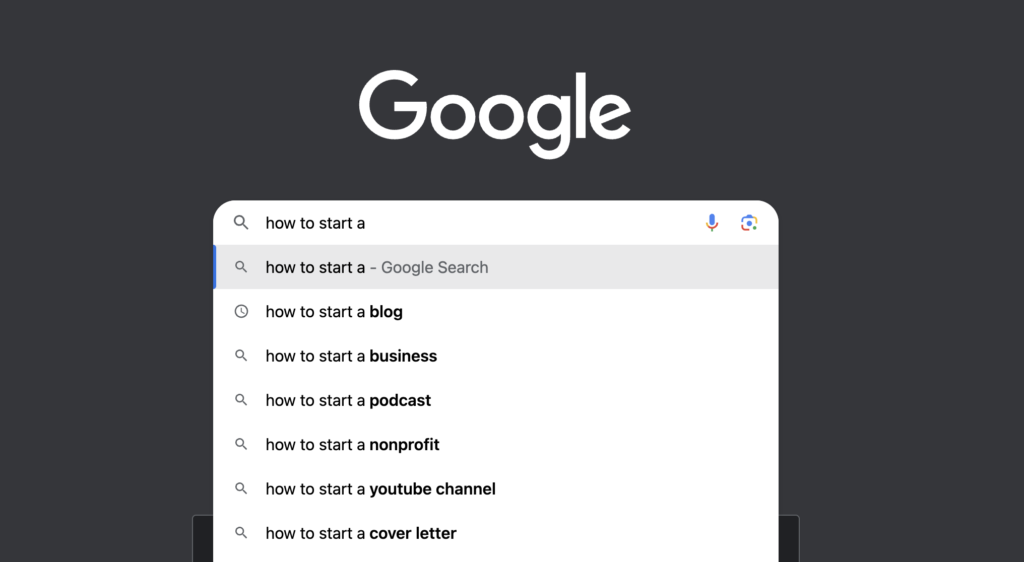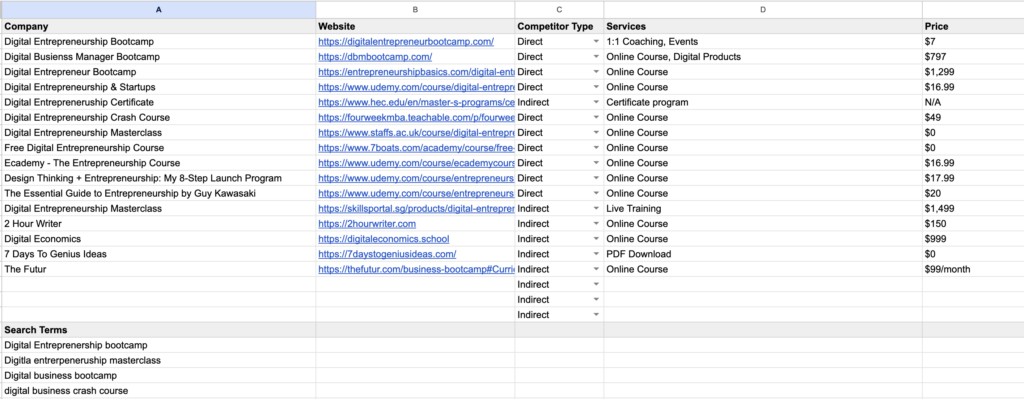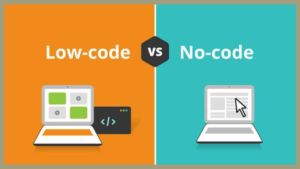Learning how to create an online course can be a game-changing experience for anyone looking to share their skills, grow an audience and potentially create an extra stream of income.
I created my first online course in 2018 with no previous experience in online course creation and found that it required a lot more work than expected – but only because I didn’t have a game plan.
In this post, I want to highlight the 7 most important steps I learned throughout my course process to help streamline your first successful online course in 2023.
Table of Contents
Do Your Research
In my opinion, research and competitive analysis are two of the biggest components in learning how to create an online course.
While you likely have an idea of what you’d like to create your course on, there’s a high chance that other courses already exist teaching the same or similar content online.
The goal of your course should be to offer your students a valuable learning experience while also differentiating your course from others in a way that is unique to your brand and memorable for your students.
Search Terms & Keyword Research
Understanding search terms associated with your course will be an important factor in learning how potential students will find your course content online.
Search terms are the commonly used batch of words that internet users use to find things on search engines such Google or Bing.
A great way to start identifying search terms related to your course is to head over to Google (or any popular search engine) and begin typing in various queries that might be used by potential students to learn about your topic.
For example, if I wanted to research search terms for “Starting an Online Business,” I would start by typing in a variety of questions and queries into Google to see what dropdown suggestions are offered:

In the example above, I attempt to type “How to Start An Online Business” into Google, and before I can finish the search, I’m suggested a list of popular search terms that match query.
Performing a variety of searches like this for your course topic can be incredibly insightful in helping you understand search terms and potential keywords that can help strengthen your course title, marketing copy, and course content to maximize your ability to drive traffic to your course once it’s launched.
The following are a few questions to keep in mind that may help with brainstorming during the research phase of your search terms and keywords:
- How do people learn this today?
- What would I search to learn about this topic?
- Who are the experts on this topic today?
- What courses already exist that teach this?
- How do people find information on this topic?
Competitive Analysis
Performing a simple but thorough competitive analysis can help you set your course apart from others on the market by understanding what your competition’s strengths and weaknesses are in their course offerings.
During this phase, I like to find as many applicable course competitors as possible and take time to browse their respective websites and landing pages to understand as much about them as possible.
Below is an example Google Sheet that I use track the following data points about potential competitiors:
- Company Name
- Website URL
- Competitor Type (Direct or Indirect)
- Direct Competitors
- These competitors offer a course nearly identical to what you plan to offer.
- These companies will likely seek to serve the same or similar audience as you and may offer lots to learn from their sales, marketing, and content strategy.
- Indirect Competitors
- These competitors offer a related but different course than you intent to offer.
- These companies may offer insights into additional keywords, search terms, or audiences that could serve as a potential market for your course as well.
- Direct Competitors
- Services
- A list of all services offered by the company.
- This can offer insights into other potential product offerings or monetization strategies that could be offered
- Price
- Document the price points offered by your competitors in order to gauge the typical price range for similar courses.
- Search Terms
- Keep track of search terms used to find related courses on your topic.
- These search terms can be used by SEO tools such as Answer The Public and Keywords Everywhere to find related keywords that could help optimize the visibility of your course in search engines.

Content
- Take note of the course content and structure offered by similar courses.
- Try to understand the modules, lessons, and content offered in each to understand opportunities where your course can offer more value than your competitors.
Choose a Topic
With a better understanding of your competition, now it’s time to solidify your course topic.
Your topic should ideally solve a problem that your target audience is facing and give them confidence that you’re the right instructor to lead them to their desired outcome.
This is a great time to differentiate your course from the others by offering your own perspective and approach to solving the problem based on your own unique skills and experiences.
Start by brainstorming initial ideas for descriptive and engaging course topics that are specific to your potential target market and narrow them down over time by validating the topics with your audience.
A few things to keep in mind during the brainstorming process:
- Course Title
- Make it descriptive and engaging
- Description
- A brief but detailed overview of what learners can expect from the course and instructor
- Headline
- A short description (one or two sentences) of your course and what students can expect to learn from it.
- Audience
- The specific group or demographic that experience a mutual problem and will benefit from enrolling in your course.
- Outcome
- The main outcome that your students will take away from your course.
Choose an E-Learning Platform
Choosing the right e-learning platform(s) to create and host your course will be one of the most important decisions of this process.
This platform will impact key factors of your course such as accessibility, marketing, analytics, profit margin, and much more.
Accessibility
Delivering a reliable and trustworthy user experience for your students will be an important factor in your course’s success.
The ability to attract and retain students in your course will heavily depend on the e-learning platform you choose and the features that it provides. While platforms like Teachable and Thinkific offer creators easy-to-use web building tools to help create well-branded course websites, other tools like Udemy do not.
Instead, platforms like Udemy act as a marketplace for online courses where learners can easily search and purchase e-courses based primarily on reviews and course previews.
Ensuring that your course is easy to find, purchase, and access will all be important things to consider while comparing various e-learning platforms to find the best fit for your course and students.
Marketing
Marketing tools are another important aspect to keep in mind when considering e-learning platforms as these features help your course scale over time.
Having a marketing strategy in mind will be helpful in determining which platform features will be most or least important to you.
For example, some e-learning platforms provide marketing tools such as:
- Email marketing
- Affiliate programs
- Revenue Sharing
- Landing pages
- Website design tools
- and so much more.
Considering all the ways you plan to sell and market your course to others will be the key to choosing the right set of marketing features for you.
Analytics
Measuring the success of a course and student outcomes is a common need for course creators in the real-world and online.
Fortunately, many e-learning platform come equipped with analytic tools and insights that allow you to track the progression of students through your course and their overall retention.
Aside from engagement metrics, enrollment and monetization analytics are other common areas that course creators often need insights into.
Keeping this in mind will be important to evaluate which set of analytic tools are most useful for your course before deciding on which e-learning platform to use.
Pricing
Pricing can also vary widely among e-learning software and this should be carefully considered while evaluating different platforms.
While analytics and marketing tools are important, the monthly (or annual) costs for e-learning software can range anywhere from free to hundreds of dollars depending on the pricing model.
Fees can also play a role in deciding which platform best meets the business needs of your course. Processing fees or monthly active user costs are just a few of the potential platform fees that can have a big impact on your course’s profit margins.
Take time to watch and read reviews by other course creators to understand their experience using any e-learning platform(s) that you may be considering for your course.
Understanding these potential downfalls and tradeoffs for each platform will be essential before making a final decision.
Create a Course Outline
Outlining your course can be a great way to organize your thoughts and save hours of time while producing your content.
The goal of your outline will be to structure your course information you in a way that makes the most sense for your future students.
This doesn’t need to be overly complex or technical – but instead, can be a simple Google Doc, note in your phone, or written on a sheet of paper:
A detailed course outline should include the following:
- Course title
- Course description
- Course topics
- Learning objectives for each topic
- Student outcomes (results that students can expect)
Creating an outline can serve as a great stating point to receive feedback from your target audience to help improve the content and format of the course by giving others a chance to preview what your course will offer.
Produce Your Content
Content is the heart of any online course.
This is what your students have paid for – and they will rightly expect a quality learning experience and outcome from their purchase.
For that reason, creating high-quality content for your course will be one of the most important tasks on this list and the proper time, energy, and effort should be put into this at all costs.
Before producing your content, you should be confident in which e-learning platform you’ll be using and understand what file formats and content types are supported by their service.
The following are just a few questions to keep in mind during this stage:
- What video/audio formats are supported?
- i.e. MOV, MP4, WAV, MP3, etc.
- What file types are supported?
- i.e. PDF, Powerpoint, JPG, PNG, etc
- What are the file size limitations?
- i.e. How large can your video/audio files be?
- Are there additional storage costs?
- i.e. Will you be charged for hosting your course content?
The answers to the questions above will help determine the best format to create and deliver your course content in.
Whether through video, audio, visual aids, livestream, or another medium – the content you create for your course will need to be tailored to the strengths and weaknesses of your e-learning platform to ensure students receive the most high-quality and engaging learning experience possible.
Market Your Course
With your course complete, it’s time to start promoting it.
There are a number of ways to promote your course online including but not limited to the following:
- Social media
- Share your course on social media and use relevant hashtags.
- Email marketing
- Send out email newsletters to your subscribers and promote your course.
- Affiliate marketing
- Offer referral and discount codes for course ambassadors and partners.
- Sales Funnels
- Create an engaging landing page and video sequence to drive traffic to your course.
- Search engine optimization (SEO)
- Optimize your course website for search engines so people can find it when they search for relevant terms
- Creating content
- Create supporting content in your niche to drive traffic to your course. This could be:
- Blogging
- Videos
- Podcasting
- etc
- Create supporting content in your niche to drive traffic to your course. This could be:
Finding the best marketing approach for your course will highly depend on your specific business goals and target audience, but in 2023, we thankfully have tons of useful tools and services at our fingertips to help us spread the word about any product or service.
Be sure to take enough time to understand the best tools and strategies available to reach your audience and potential students and tailor your marketing efforts to best suit their needs.
Implementing an efficient and effective marketing strategy can not only save you time, but also multiple the potential earnings from your course by acting as a high-quality traffic source driving leads to your course 24/7.





